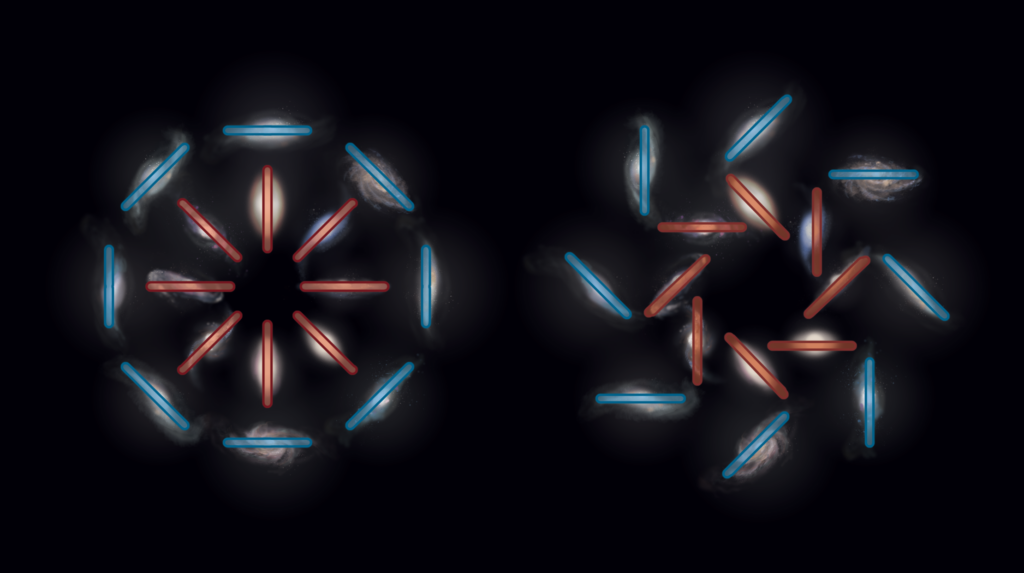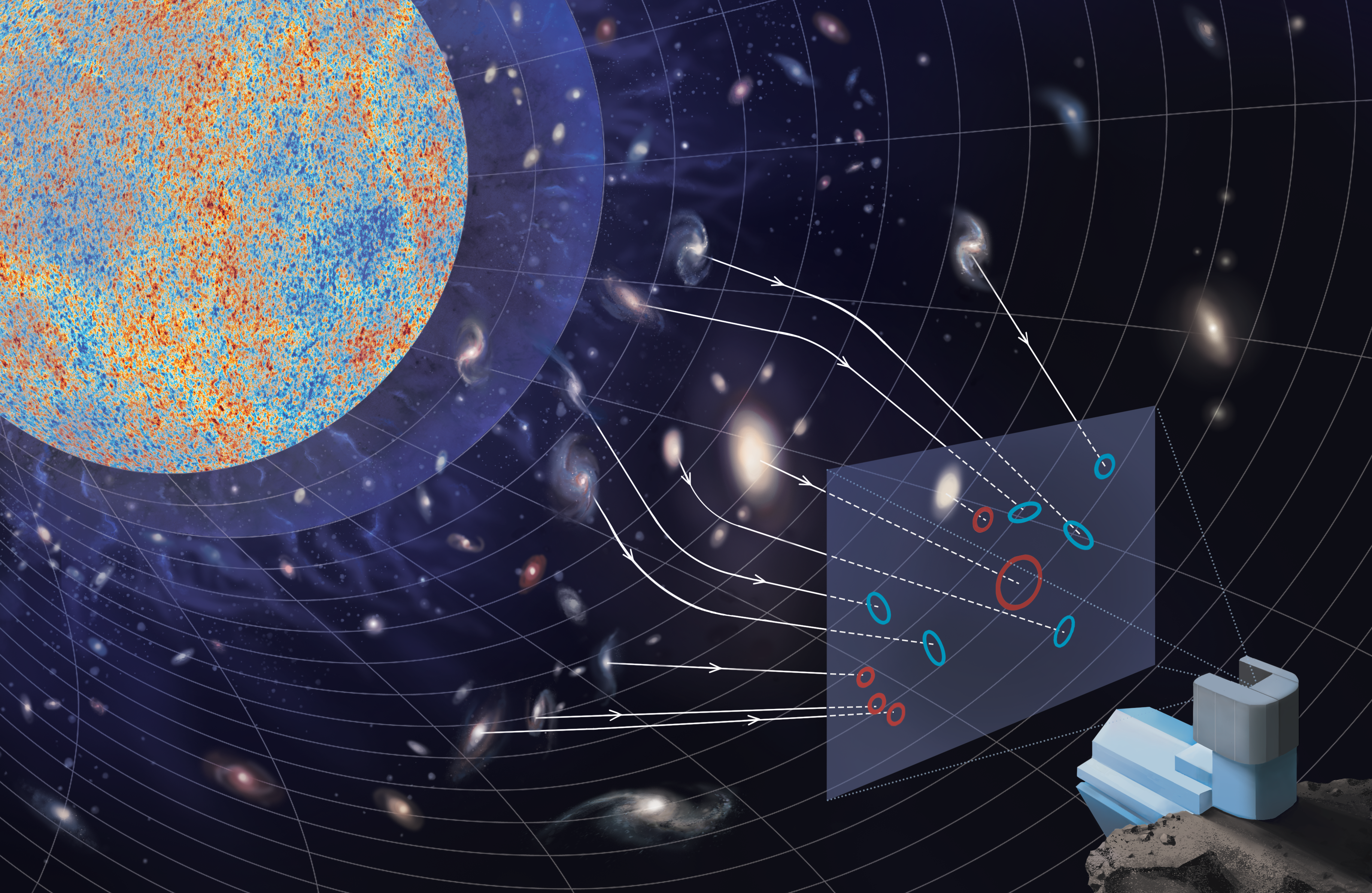Fortuna and Chisari (2022), CC-BY-NC 4.0
The Vera C. Rubin Observatory will use galaxies, among other observables, to test the model of the Universe and infer information about its geometry and the content of dark matter and dark energy. One of the probes used to achieve this goal is the analysis of galaxy shapes (blue ellipses) and positions (red circles). Galaxy shapes are distorted as light travels through the structure of the Universe, revealing the presence of dark matter and the effect of dark energy. Similarly, galaxy positions are affected by how galaxies move towards each other due to gravity. Because light travels at a finite speed, looking at distant objects provides information about the history of the Universe. The most distant limit is the cosmic microwave background (CMB), emitted long before the formation of galaxies: a complementary probe that can be combined to study the model of the Universe. Image credit: Fortuna and Chisari (2022), CC-BY-NC 4.0; CMB background (top left) © ESA and Planck Collaboration.




